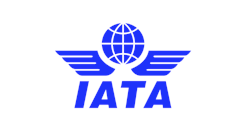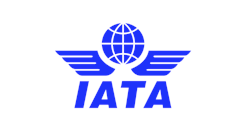Apr. 20—The last U.S. airline to maintain a social-distancing policy of leaving middle seats empty to lower COVID-19 risk is set to start filling them next month, just weeks after a new federal study found evidence that greater spacing can greatly reduce virus transmission.
The U.S. Centers for Disease Control and Prevention study published last week comes as air travel rebounds amid falling virus case rates, looser travel restrictions and more people getting vaccinated. And that invites another look at the question on many travelers' minds during the pandemic: How safe is it to fly?
The CDC study noted that because aircraft can hold large numbers of people in close proximity for long periods, there is increased risk for transmitting infectious diseases like COVID-19. A recent investigation of an international flight found that 75% of passengers who became infected after the flight were seated within two rows of a symptomatic passenger who likely originated the outbreak, it said.
The latest study found that based on laboratory modeling of exposure to the virus on single-aisle and twin-aisle aircraft, leaving the middle seats vacant reduced exposure from 23% to 57% depending on the configuration, compared with full aircraft occupancy.
"Physical distancing is difficult on crowded flights, and sitting within 6 feet of others, sometimes for hours, might increase risk," the study said. "Physical distancing of airplane passengers, including through policies such as middle seat vacancy, could provide additional reductions in risk for exposure."
The CDC study noted that the effect of wearing face masks was not considered in the analysis, which focused on aerosol exposure, because masks are more effective at reducing exposures through tiny respiratory droplets.
But it also said that a case study of COVID-19 transmission on a flight with mandated mask wearing "suggests that some virus aerosol is emitted from an infectious masked passenger, such that distancing could still be useful."
The airline industry has sharply disputed the suggestion it is putting profits ahead of passenger safety and said that the hospital-grade air filtration systems aboard aircraft, sanitizing policies and mask wearing have been shown to make flying safe.
"U.S. airlines have implemented multiple layers of measures aimed at preventing virus transmission, including strict face covering requirements, pre-flight health-acknowledgement forms, enhanced disinfection protocols and hospital-grade ventilation systems," the industry group Airlines for America said in a statement.
The industry group points to several studies including one by the Harvard T.H. Chan School of Public Health, Aviation Public Health Initiative that said the measures taken by the airlines reduce the risk of transmission of the virus aboard aircraft "below that of other routine activities during the pandemic, such as grocery shopping or eating out."
The CDC in January required passengers to wear face masks to prevent spread of COVID-19, including all passengers on aircraft traveling into, within, or out of the U.S. The CDC has also recommended against travel for those who have not been vaccinated.
But the CDC and federal officials haven't mandated an airline seat-distancing policy.
U.S. Sen. Jeff Merkley, an Oregon Democrat, introduced legislation last July that would have required airlines to leave middle seats empty, after becoming alarmed while on a packed flight. He argued at the time that airlines were "willing to put their profit margins ahead of the health of their customers."
Over the course of the pandemic, many airlines did initially leave middle seats empty to reduce virus risk, in part because with so few people flying, it wasn't really costing them anything.
But as air traffic began to pick up last summer, most carriers started filling those seats again. Southwest Airlines, the nation's largest domestic carrier, ended its policy in December. Delta Air Lines continued to market its empty middle seats as a benefit to passengers as recently as February, but said that policy would end May 1.
The airline industry is seeing a welcome return of travelers who disappeared during the peaks of the pandemic. Transportation Security Administration checkpoint figures showed 1.57 million air travelers on Sunday, compared with 105,382 the same day last year and 2.36 million the same day in 2019.
But travel still isn't fully recovered, with many restrictions in Europe keeping international travel low.
"The entire system is at about a 35% reduction in volume and probably closer to a 55% reduction revenue," said Robert Mann, an airline industry analyst and former industry executive in New York. Domestic travel, however, is at about 70% pre-pandemic levels, with many carriers projecting 85% based on summer booking trends.
Leaving seats empty is costly. For airlines to get the same revenue as a fully booked plane, Mann said, "it would have required a 45% price increase."
"That was untenable," Mann said, given leisure travelers' price sensitivity.
What do health experts say?
Dr. Bob Wachter, chair of the University of California-San Francisco Department of Medicine, said in a recent string of comments on Twitter that it's a bit complicated.
"I'm comfortable flying," Wachter said, adding he has flown a couple of times this year and is fully vaccinated. "I won't take a frivolous trip, but will fly to visit family or for an important work-related event. I consider flying while masked to be exceptionally safe for a vaccinated person."
But Wachter added that flying is "really two different experiences," a "100% masked experience in a clean environment with frequent air exchanges," and "an indoor restaurant in the sky."
That second part is worrisome, Wachter said, because he doesn't know where his fellow travelers have been and what the infection rates are there. So he avoids eating on flights, and if he must, waits until others are finished eating before removing his mask to eat or sip some water.
"While you'll see me on the plane, I'll be the guy with his mask on during meal service," Wachter said. "It just makes sense to me."
___
(c)2021 the San Jose Mercury News (San Jose, Calif.)
Visit the San Jose Mercury News (San Jose, Calif.) at www.mercurynews.com
Distributed by Tribune Content Agency, LLC.


